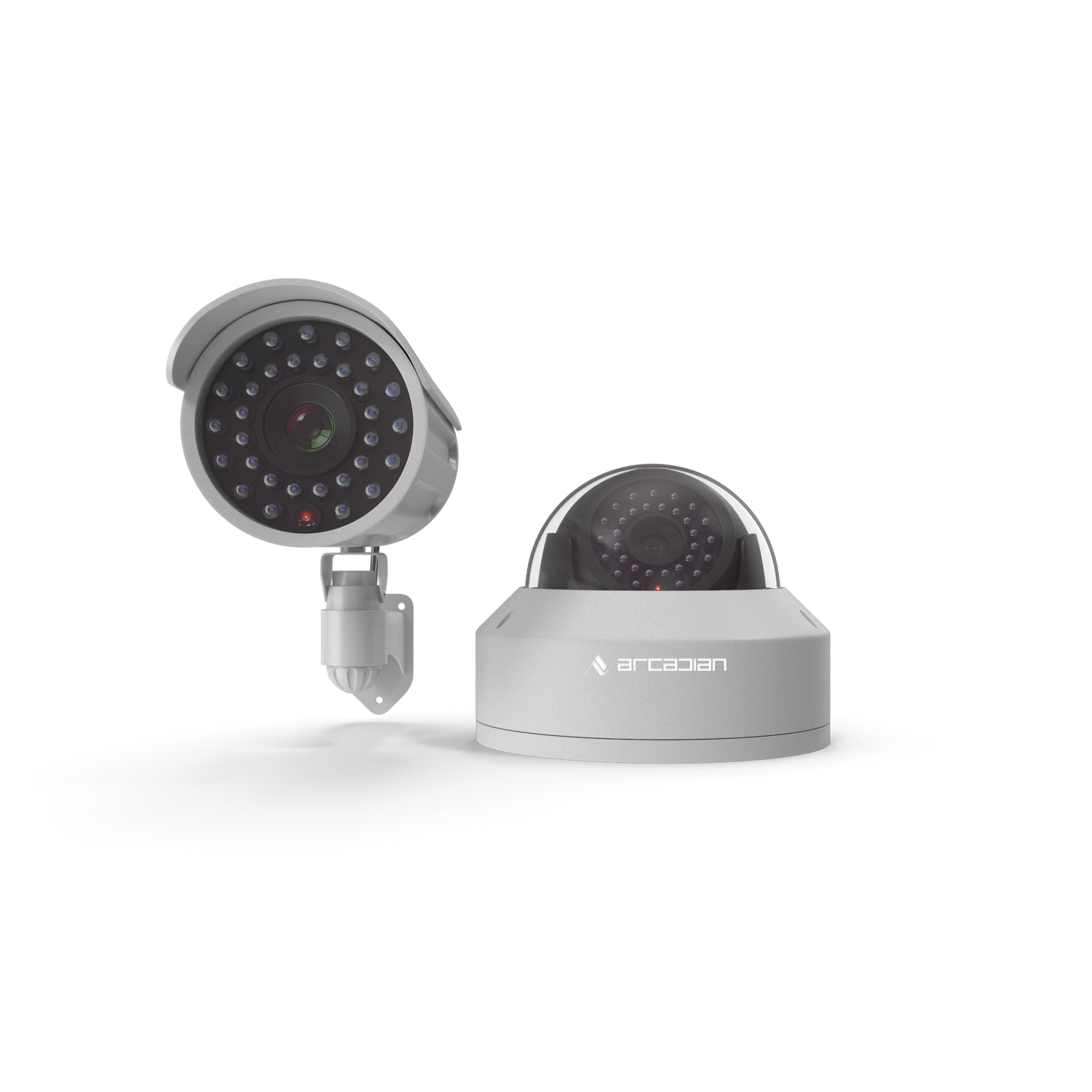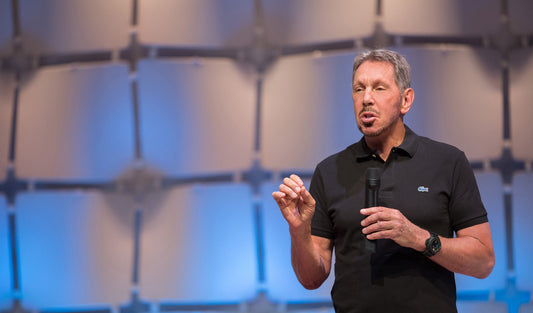The Great Surveillance Deception: Why Most 'AI Cameras' Aren't Really AI — And What That Means for Security
Introduction "AI-powered cameras." "Smart detection using artificial intelligence." If you’ve been anywhere near a modern security trade show, vendor pitch, or product spec sheet in the past five years, you’ve heard these phrases thrown around like confetti. Major surveillance camera manufacturers like Axis, Hikvision, Dahua, Hanwha, Avigilon, and Bosch proudly...

Introduction
"AI-powered cameras." "Smart detection using artificial intelligence." If you’ve been anywhere near a modern security trade show, vendor pitch, or product spec sheet in the past five years, you’ve heard these phrases thrown around like confetti. Major surveillance camera manufacturers like Axis, Hikvision, Dahua, Hanwha, Avigilon, and Bosch proudly slap the term "AI" on nearly every device they ship.
But here's the catch: most of this so-called "AI" isn’t AI at all—at least not in the way the public or even industry professionals think. And this isn’t just semantics; this misunderstanding leads to flawed expectations, misallocated budgets, and ultimately weaker security.
This blog post is your in-depth exposé on what major surveillance brands actually offer when they claim "AI," why most edge-camera intelligence is fundamentally limited, and how you can separate the signal from the noise in a world oversaturated with artificial claims.
What AI Should Mean (But Rarely Does)
Let’s be clear: real AI—actual artificial intelligence—involves systems that can learn, reason, predict, and adapt based on new information. In security terms, real AI might mean a camera that:
-
Understands complex behaviors, like someone casing a joint vs. walking their dog
-
Learns new threats based on past events without human intervention
-
Makes context-based decisions without predefined rules
But that’s not what you’re getting in most commercial security systems. Instead, what’s marketed as AI is usually rule-based video analytics with pre-trained models. It’s closer to a very smart calculator than a thinking machine.
The Brand-by-Brand Breakdown
Axis Communications
Axis markets its cameras—especially those with ARTPEC-7 and ARTPEC-8 chips—as having "AI at the edge." Their flagship feature, AXIS Object Analytics, detects motion, classifies objects (like humans vs. vehicles), and offers basic alerting like line crossing.
Reality Check: Yes, Axis uses convolutional neural networks to do object classification. This is real AI in a narrow sense—but it's highly restricted. The camera doesn't learn or adapt on its own. Everything is pre-trained and scenario-specific. You set the rules; it executes them. No autonomy, no reasoning.
Why They Say It's AI: Because there is AI involved (pre-trained object classification). But it’s static, narrow AI, not adaptive intelligence. It reduces false alarms but still requires human configuration and oversight.
Hikvision
With product lines like AcuSense and DeepinView, Hikvision sells cameras and NVRs that claim face detection, human/vehicle classification, ANPR, and even "self-learning analytics."
Reality Check: Hikvision does use deep learning—CNNs to distinguish people from vehicles, for example—but the analytics are still reactive and rule-based. There's no open-ended reasoning or scene understanding.
Why They Say It's AI: Because the underlying algorithms do involve machine learning. But it's learning done in training labs, not by the camera itself in the field. Operators still need to define rules, zones, and triggers. It's smart detection, not intelligence.
Dahua Technology
Dahua pushes its WizSense and WizMind platforms as AI-forward, including smart motion detection, people counting, PPE detection, and even fall detection. Their devices often support voice warnings and light deterrents.
Reality Check: Most Dahua features use pre-trained object recognition and require user-defined rule sets. While it's advanced—especially features like illegal parking or crowd density—it's still deterministic logic. There's no behavioral understanding or dynamic learning in the wild.
Why They Say It's AI: Because they use AI chips to run trained models. But nothing learns after deployment. It's automation, not cognition.
Hanwha Techwin (Hanwha Vision)
Known for the Wisenet series, Hanwha highlights AI-powered metadata (age, gender, clothing, vehicle type) and attribute-based search. They promote "open platform" cameras that run third-party AI apps.
Reality Check: Hanwha's analytics are powerful, especially when used with systems like Pathr.ai for behavioral tracking. But again, it’s metadata tagging based on known classes. These aren’t systems that deduce, infer, or adapt. They spot patterns they've been trained to recognize and trigger pre-defined alerts.
Why They Say It's AI: Because they're using deep learning to extract metadata. But when the camera encounters something outside its model, it simply fails silently.
Avigilon (Motorola Solutions)
Avigilon has perhaps the most robust AI suite, including Appearance Search, Unusual Motion Detection (UMD), and full-scene classification. Its AI NVRs even use NVIDIA GPUs for facial recognition and behavior search.
Reality Check: Avigilon gets closer to real AI than most. UMD, for example, is unsupervised learning that detects anomalies without rules. Appearance Search uses similarity algorithms that mimic cognitive search. But even here, learning happens upstream, and there's no true autonomy. The system can't answer "why" something is happening or generate new conclusions.
Why They Say It's AI: Because it is. But it’s bounded AI: efficient at narrow tasks but still blind to the unexpected.
Bosch Security
Bosch’s IVA Pro suite includes perimeter protection, behavior recognition, and crowd counting. Its latest versions run DNNs directly on the camera.
Reality Check: Bosch’s newer analytics are impressive. Some can operate without manual calibration and offer scene-level object persistence. But it's still rule-based execution using pre-trained networks. The system doesn’t reason or adapt on its own.
Why They Say It's AI: Because IVA Pro uses real deep neural nets. However, the decision-making framework still relies on human-defined logic.
The Problem with Calling This "AI"
So, what’s the issue with all this marketing hype?
-
It misleads buyers. When integrators or business owners hear "AI," they think of adaptability, insight, and automation. What they get is often just fancy motion detection.
-
It inflates costs. Vendors justify premium pricing with the AI label, even if the functionality is limited and inflexible.
-
It undermines real innovation. Companies genuinely trying to build adaptable, learning systems get drowned out by noise.
-
It creates a false sense of security. Operators believe the system will catch novel threats. But these systems miss anything outside their training set.
So, What Is Real AI in Surveillance?
Real AI in video surveillance means systems that can:
-
Learn patterns of behavior over time (not just objects)
-
Adjust thresholds dynamically based on context (e.g., increased sensitivity during abnormal hours)
-
Reason about sequences of events
-
Answer forensic questions (e.g., "Who loitered near this door last week?")
-
Predict incidents before they occur
This kind of AI is emerging—but it’s not what most current edge cameras do. True AI might involve cloud-based systems or platforms like Arcadian.ai, which combine object detection with time-sequenced reasoning, NLP-based query interfaces, and behavior prediction.
Conclusion: AI Is Not Binary — But Context Matters
Just because a system uses neural networks doesn’t mean it’s intelligent. Intelligence is not about recognizing a cat; it’s about understanding what the cat is doing, why it matters, and what should be done about it. Most edge AI cameras simply don’t do that.
They detect. They alert. They filter. But they don’t understand.
As buyers, integrators, and innovators, we need to push past buzzwords and ask: What does this AI actually do? Is it rule-based or adaptive? Reactive or predictive?
If you're paying for intelligence, make sure you're not just buying pattern recognition in a black box.

Security is like insurance—until you need it, you don’t think about it.
But when something goes wrong? Break-ins, theft, liability claims—suddenly, it’s all you think about.
ArcadianAI upgrades your security to the AI era—no new hardware, no sky-high costs, just smart protection that works.
→ Stop security incidents before they happen
→ Cut security costs without cutting corners
→ Run your business without the worry
Because the best security isn’t reactive—it’s proactive.







